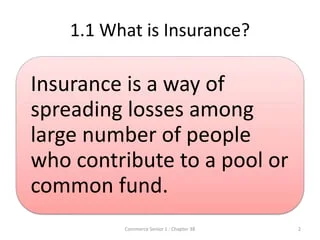The Greatest Guide To Pacific Prime
The Greatest Guide To Pacific Prime
Blog Article
How Pacific Prime can Save You Time, Stress, and Money.
Table of ContentsPacific Prime Can Be Fun For EveryoneThe Only Guide for Pacific PrimeGetting The Pacific Prime To WorkAll About Pacific Prime
In the majority of states, the insurance firm is called for to send you a copy of the changes to your plan. It is crucial that you review Recommendations or Cyclists so you understand just how your policy has actually changed and if the policy is still adequate to satisfy your requirements. To acquire a duplicate of your insurance plan, please call your insurance agent or company.
The Institute of Medication (IOM) Committee on the Consequences of Uninsurance launches a prolonged examination of evidence that addresses the significance of medical insurance protection with the publication of this record. Insurance coverage Matters is the first in a collection of six records that will be provided over the following two years recording the fact and repercussions of having an approximated 40 million people in the USA without health insurance coverage.

The Only Guide to Pacific Prime
The objective of this series of research studies is to redouble plan attention on a longstanding trouble. Adhering to the lengthiest financial development in American history, in 1999, an approximated one out of every six Americans32 million grownups under the age of 65 and more than 10 million childrenremains without insurance (Mills, 2000).

Ten percent of the populace accounts for 70 percent of healthcare expenditures, a relationship that has stayed constant over the past three decades (Berk and Monheit, 2001) - group insurance plans. Therefore health and wellness insurance coverage continues to serve the function of spreading risk even as it progressively funds regular treatment. From the perspective of healthcare carriers, insurance policy lugged by their individuals helps secure a profits stream, and areas gain from economically practical and steady healthcare professionals and organizations
Government provides medical insurance to populations whom the exclusive market might not offer properly, such as handicapped and senior individuals, and populaces whose access to health treatment is socially valued, such as children and expecting ladies. The utmost ends of health and wellness insurance protection for the specific and communities, consisting of work environment communities of employees and companies, are boosted health results and top quality of life.
Pacific Prime Can Be Fun For Anyone
Employees place medical insurance initially by much in significance among all the advantages supplied in the work environment (Salisbury, 2001). Although there have been substantial investments of individual and public funds to supply medical insurance, many individuals still have no coverage. Despite comprehensive coverage of study findings and wellness care research study results, the public remains baffled and mistaken concerning Americans without wellness insurance policy and the implications of lacking protection.

Without question, the complexity of American healthcare funding devices and the wealth of resources of details contribute to the public's confusion and skepticism about health and wellness insurance policy statistics and their interpretation. This report and those that will follow aim to boil down and present in readily understandable terms the substantial study that bears upon inquiries of wellness insurance policy protection and its value.
Fifty-seven percent of Americans polled in 1999 thought that those without medical insurance are "able to obtain the treatment they require from physicians and healthcare facilities" (Blendon et al., 1999, p. 207). In 1993, when national focus was concentrated on the issues of the uninsured and on pending healthcare regulations, just 43 percent of those polled held this belief (Blendon et al., 1999).

They additionally receive fewer preventative solutions and are less most likely to have routine this contact form take care of chronic conditions such as hypertension and diabetic issues. Persistent illness can lead to expensive and disabling difficulties if they are not well taken care of (Lurie et al., 1984; Lurie et al., 1986; Ayanian et al., 2000). One national survey asked greater than 3,400 adults regarding 15 very major or dark conditions.
Pacific Prime Fundamentals Explained
Added evidence exists later on in this phase in the conversation of insurance and access to healthcare. https://pubhtml5.com/homepage/pspip/. People without wellness insurance are young and healthy and balanced and choose to go without protection. Virtually half (43 percent) of those evaluated in 2000 thought that people without wellness insurance are most likely to have illness than individuals with insurance
Citizens and plan makers in emphasis team conversations characterize those without insurance coverage as youngsters who have the possibility to be covered and feel they do not need it (Doorperson Novelli, 2001). Contrasted to those with at least some exclusive coverage, the uninsured are less likely to report remaining in excellent or extremely good health and wellness (Firm for Healthcare Research and Quality, 2001).
RESOURCE: Facility for Expense and Financing Studies, Agency for Health Care Study and Quality, based on MEPS data. Young grownups between 19 and 34 are much more likely to lack medical insurance than any type of various other age. This is chiefly due to the fact that they are less typically qualified for employment-based insurance coverage as a result of the nature of their work or their brief tenure in it.
The perception that people without insurance coverage have better-than-average wellness adheres to from puzzling the reasonably young age profile of the uninsured with the far better health, generally, of younger persons. This obscures the link between health status and medical insurance. For those without accessibility to work environment medical insurance, inadequate wellness is a possible barrier to acquiring nongroup coverage due to the fact that such insurance coverage may be highly priced, omit pre-existing problems, or be just unavailable.
Report this page